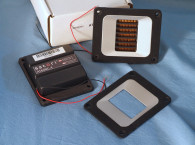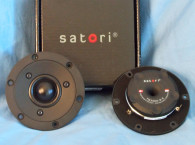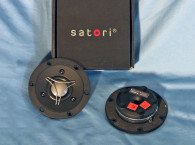
Features for the MD60N-6 include a non-resonant coated cloth 2.5” diameter diaphragm and surround, a 60.5mm diameter voice coil wound with round copper wire on a vented aluminum voice coil former. The motor system consists of large neodymium (neo) ring magnet with a low carbon content steel return. The device incorporates a dynamic dome stabilizer and flow resistor, which takes the form of a 1mm thick perforated dome-shaped aluminum grille that sits underneath the soft-dome (spaced 2mm to 3mm). There is also a damping pad mounted directly on the back side (covering its entire surface). This fires into the injection-molded back-closed transmission line enclosure that is filled with Thinsulate (acoustic/thermal insulation material). Other features include 95dB 2.83V/1m sensitivity, a machined aluminum faceplate, gold-plated terminals, braided silver Litz wire tinsel leads located on opposite side of the dome to minimize voice coil rocking, a 120W-rated power handling, 0.5mm Xmax, and a nominal 6Ω impedance.
Testing commenced using the LinearX LMS analyzer to produce the 300-point impedance sweep illustrated in Figure 1. With nominal 6Ω impedance, the MD60N has a 5.25Ω DCR, with minimum impedance mounted of 5.8Ω and at 2kHz.
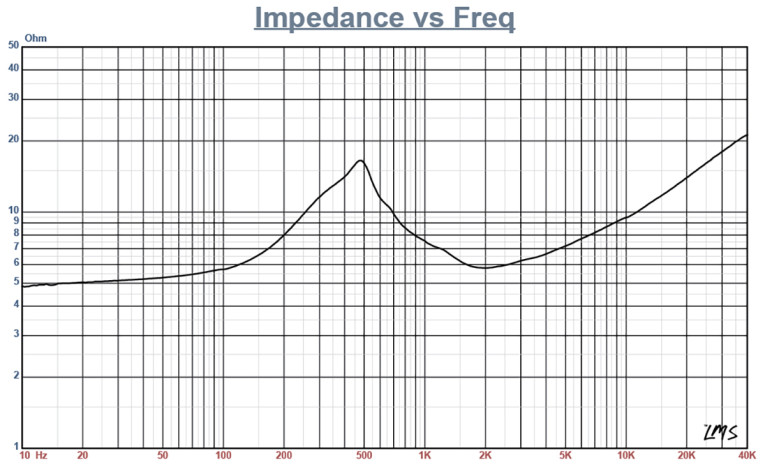
Following the impedance test, I recess mounted the SB Acoustics midrange dome in an enclosure with a baffle area of 15”×6” and measured the on- and off-axis frequency response again using the Loudsoft FINE R+D analyzer (provided to Voice Coil by Loudsoft) and the GRAS 46BE 1/4” microphone (courtesy of GRAS Sound & Vibration), which were set up to measure the 200Hz to 40kHz frequency response (using a 192kHz sampling rate) at 2V/0.5m normalized to 2.83V/1m. Sweeps were performed at 0°, 15°, 30°, and 45°.
Figure 2 shows the on-axis response of the SB Acoustics midrange dome, which measured ±2dB from 0.73kHz to 14.8kHz, when it began its second-order low-pass roll-off.
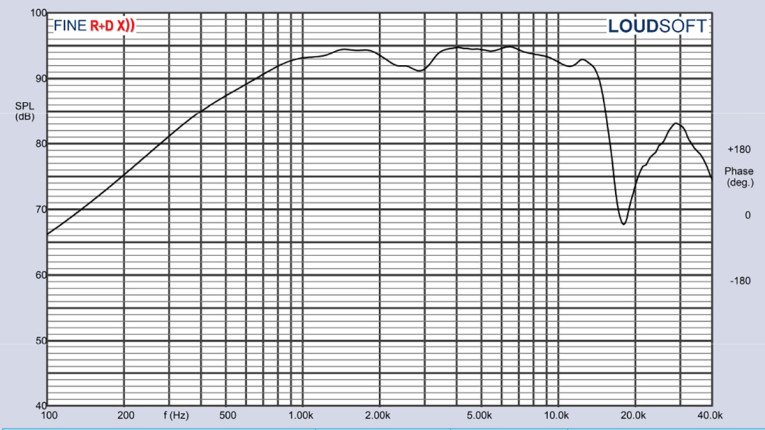
Figure 3 gives the on- and off-axis response of the MD60N-6 midrange dome. Figure 4 shows the off-axis curves normalized to the on-axis response. Figure 5 displays the CLIO 180° polar plot (measured in 10° increments with 1/3 octave smoothing). The device is –3dB down at 30° off-axis with respect to the on-axis at about 3.5kHz, likely the highest crossover frequency that should be considered to produce an adequate system power response.
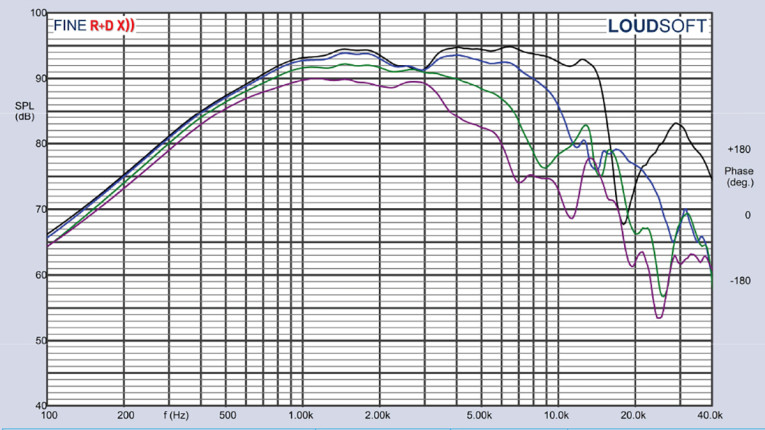
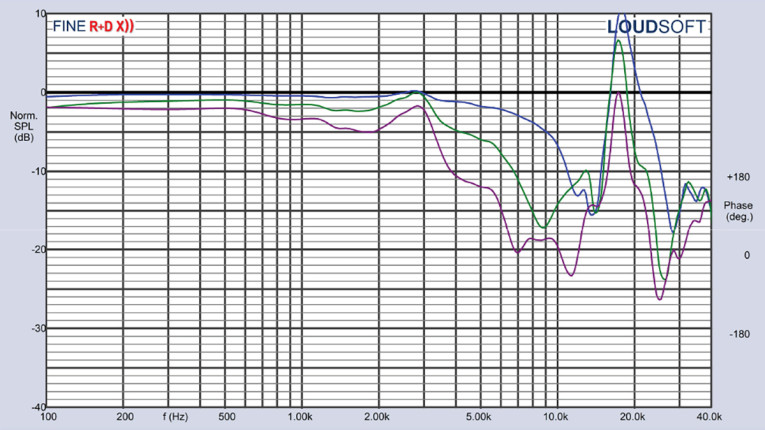
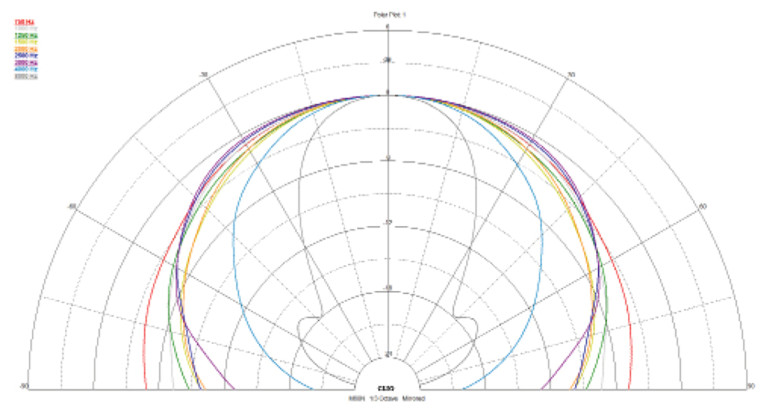
Figure 6 shows the two-sample SPL comparison of the SB Acoustics Satori midrange dome, indicating the two samples were closely matched to within 0.5dB throughout its operating range from 700Hz to 15kHz.
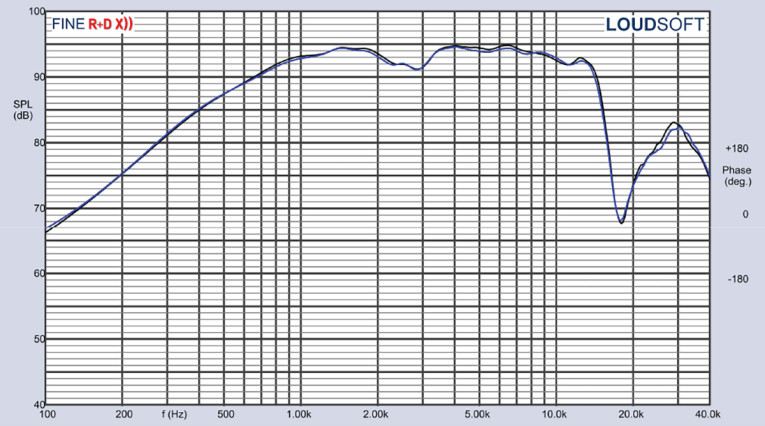
I fired up the Listen, Inc. SoundCheck AudioConnect analyzer along with the Listen Inc. SCM 2 1/4” microphone (provided courtesy of Listen, Inc.) and measured the impulse response with the midrange dome recess mounted on the same 15”×6” test baffle. Importing this data into the Listen SoundMap software produced the cumulative spectral decay plot (commonly referred to as a “waterfall” plot) shown in Figure 7.
Figure 8 depicts the Short Time Fourier Transform (STFT) displayed as a surface map plot.


Then, I set the 1m SPL to 94dB (2.86V) using a pink noise stimulus, and measured the second and third harmonic distortion at 10cm, illustrated in Figure 9. Distortion is dominated by the second harmonic with a very low third harmonic distortion, however even the second harmonic content is well below 1% above 1kHz.
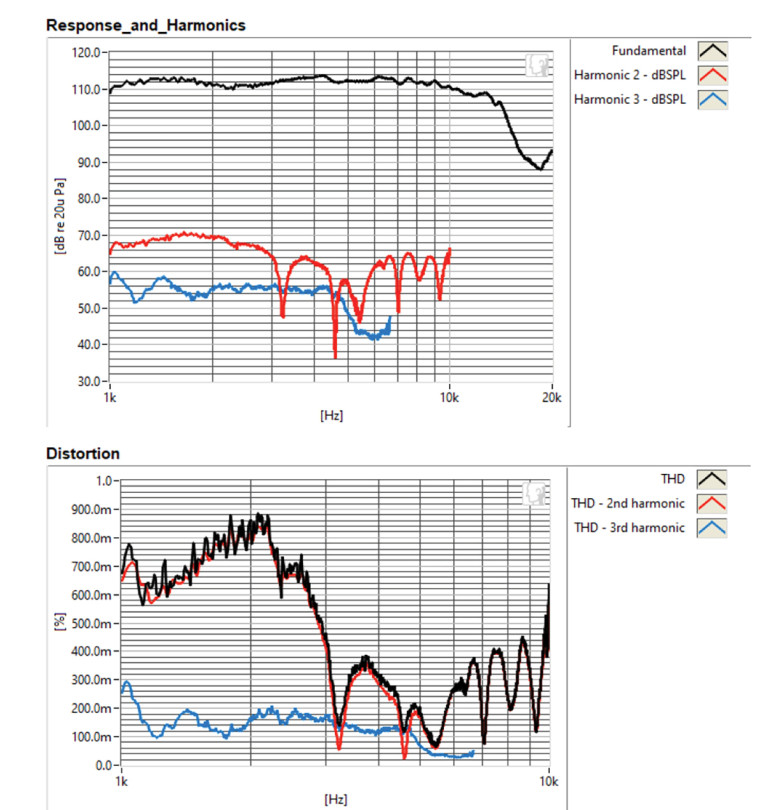
The build quality of the MD60N-6, like all SB Acoustics’ drivers (especially the Satori line products), is definitely appropriate to the high-end two-channel and studio monitor market for which it is intended. So, given all the data collected for the MD60N-6 midrange dome, I would have say that SB Acoustics has created another highly useful transducer. For more information the SB Acoustics Satori MD60N midrange dome and other home hi-fi drivers, car audio, and pro sound drivers, visit the SB Acoustics website at www.sbacoustics.com. VC
This article was originally published in Voice Coil, August 2022





